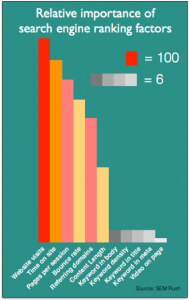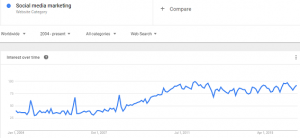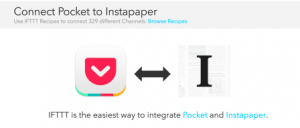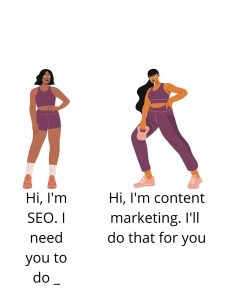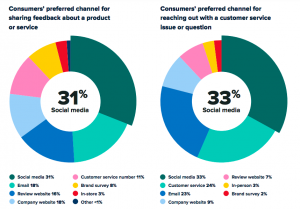Learn how reception marketing can help your brand provide real-time, valuable content tailored to consumer needs.
There aren’t enough hours in a day. You spend eight hours working. If you’re lucky (or really disciplined), you get eight hours of sleep. What do you do with the remaining eight hours? Data says you likely spend much of it consuming digital media.
As a marketer, you might think that the more time people spend online, the more opportunities we have to capture their interest through marketing. But it’s simply not true. If anything, the more content people consume, the more difficult it is to stand out and capture their interest.
Before we started piling millions of terabytes of data daily, marketing aimed to capture a significant portion of available consumer interest (or mindshare). Most consumers already account for that mindshare — there’s no space left.
Now, the goal of marketing is to break through the noise.
Tuning into reception marketing
We’re not only up against traditional, direct competitors. Now, we must break through the content produced by start-ups, online media publications, affiliates and even user-generated content.
And it should come as no surprise that market shares have fallen across industries. Agile start-ups and online publishers are pirating attention away from global brands by creating more engaging, resourceful and user-focused content. This amounts to a 36% reduction in online market share for top beauty brands, a 55% decrease for leading home insurance brands and a staggering 100% loss for pharma brands.
To regain attention, you must connect consumers to the information they seek and build meaningful relationships. In other words, your brand must also become a publisher.
This is a critical piece of reception marketing, an approach to connect modern consumers to the information they will find most valuable based on where they are in the consumer journey. This requires:
- Researching consumer behavior and intent.
- Making content that meets that intent to address consumer needs.
- Optimizing the content to be visible throughout all customer journey points.
Making sense of the consumer journey
Reception marketing begins with data. When consumers enter the buyer’s journey, researching solutions to their needs across different platforms, they leave behind small traces of information — what questions they’re asking, what resources they find useful and more. When taken together, that data turns into insights you can use to determine consumer intent.
This is the starting point for consumer connection. You can then develop and optimize content based on these insights to meet consumers with the valuable content they need.
Optimizing content also requires it to be visible at all points of the journey, but this can be challenging. Instead of following a neat, linear path, consumers embark on a journey that twists, turns and wavers between awareness, consideration and intent to buy.
As consumers go through this process, share content every step of the way. This ultimately leads users back to your brand when it’s time to purchase.
This approach provides solutions and creates a positive experience for consumers that turns into a strong connection with your brand. As a result, you develop loyalty and trust to motivate future conversions.
Unfortunately, there is no “one size fits all” to the buyer’s journey. It’s highly personalized and certainly not linear. But, for large brands in high-consideration industries, it does provide a map to help build out a reception marketing strategy, like owned asset optimization (OAO).
With OAO, brands take a detailed, data-informed look at their entire asset stack to find opportunities to gain more control over consumer experiences with existing content or by filling in missing gaps.
This enables you to meet consumer needs with owned content — either directly or by influencing managed and leveraged channels — improving control over your messaging and effectively cutting through the noise.
Leading the competition
The key to capturing consumer attention is to avoid becoming part of the noise that consumers are overwhelmed with each day. The modern consumer is busy managing personal and professional notifications while navigating a world constantly trying to sell anything to anyone at any time. It’s exhausting. Rather than drawing positive consumer attention, brands too often become a nuisance.
When done poorly, disruptive strategies, like interruption marketing, are not only ineffective — they’re annoying. Standing out from the competition requires listening and responding to consumers using an OAO strategy.
By informing their strategy with consumer behavior and intent research, you can build valuable content matched to the exact moment a consumer is looking for help. This means that even if that content is an ad, it’s targeted precisely to reach the consumer when they need it, not when it’s interrupting them. This synergy leads consumers to trust, triggering long-term brand equity, new customers and repeat business.
Traditional digital marketing emphasizes channel-first content strategies rather than focusing on the consumer experience. Leaning into OAO will provide content that understands consumer intent and needs in real-time, appealing to consumers throughout their journeys and establishing relationships before it’s time to buy.
Reception marketing uses data to establish real consumer connections based on trust and reliably deliver the content consumers need. Rather than feeling overwhelmed by data and competition, you should leverage that information to start creating brand content that’s valuable and stands out to consumers.
The post Breaking through the noise: How brands can connect with today’s consumers appeared first on MarTech.
MarTech(3)
